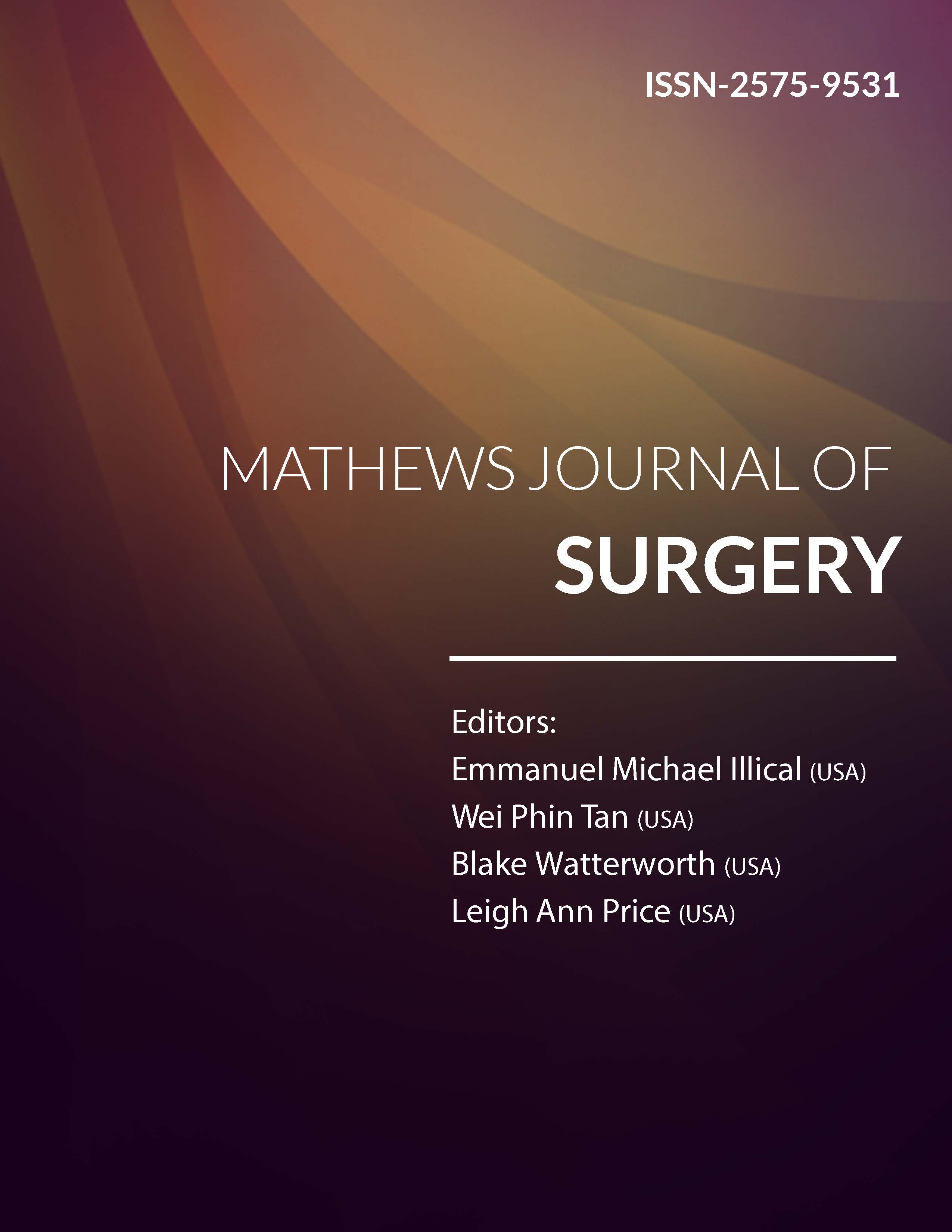
Information Links
Previous Issues Volume 6, Issue 2 - 2023
Curious Case of Obstructive Jaundice: A Case Report
Shaikh Mohd Shaad1, Pathrikar Prathamesh1, Desai Shivani1, Sheth Neil1, Chatterjee Sanjay2,*
General Surgery Resident at Bombay Hospital, Mumbai, Maharashtra, India
Assistant Professor, Maharashtra University of Health Sciences, Nashik Postgraduate Teacher, Bombay Hospital Institute of Medical Sciences, Mumbai, Maharashtra, India
*Corresponding Author: Dr Chatterjee S, Assistant Professor, Maharashtra University of Health Sciences, Nashik Postgraduate Teacher, Bombay Hospital Institute of Medical Sciences, Chamber no. 108, Bombay Hospital Institute of Medical Sciences, Bombay Hospital Avenue, New Marine Lines, Mumbai-400020; Tel: +919322243938; Email: [email protected]
Received Date: May 02, 2023
Publication Date: May 18, 2023
Citation: Shaad SM, et al. (2023). Curious Case of Obstructive Jaundice: A Case Report. Mathews J Surg. 6(2):19.
Copyright: Shaad SM, et al. © (2023)
ABSTRACT
Background: Mirizzi syndrome is defined as common hepatic duct obstruction caused by extrinsic compression from an impacted stone in the cystic duct or infundibulum of the gallbladder. Patients with Mirizzi syndrome can present with jaundice, fever, and right upper quadrant pain. Mirizzi syndrome is often not recognized preoperatively in patients undergoing cholecystectomy and can lead to significant morbidity and biliary injury, particularly with laparoscopic surgery. Summary: Here we present a case of a 53 year old women, known case of hypertension, presented with complaints of abdominal pain, yellowish discoloration of eyes, and fever with chills since 15 days. Clinically, patient was pale, icteric. Tenderness was noted in the right hypochondrium with no guarding/rigidity. Biochemical parameters were suggestive of pancreatitis with deranged ALP, GGTP and Bilirubin values. Ultrasonography was suggestive of a 16 mm calculus at infundibulum. MRCP was suggestive of Acute Oedematous Interstitial Pancreatitis, 16 mm GB calculous causing external compression of CBD with Proximal IHBRD suggestive of Type 1 Mirizzi syndrome. An ERCP with CBD stenting was done and the patient was advised interval cholecystectomy. Intraoperatively during interval cholecystectomy it was revealed to be a Type 3 Mirizzi syndrome. Fundus first approach was used and partial cholecystectomy with transcholecystic retrieval of the stone was done. Conclusion: Laparotomy with Complete Cholecystectomy remains the ideal management of Mirizzi Syndrome. Cases where the Calots Triangle Anatomy is Difficult to define, a Sub-total/partial cholecystectomy is suggested leaving behind a stump of GB or Cystic duct. Laparoscopic Subtotal Cholecystectomy can be safely undertaken for up to type 3 Mirizzi syndrome.
Keywords: Obstructive jaundice, cholelithiasis, Pancreatitis, Mirizzi Syndrome